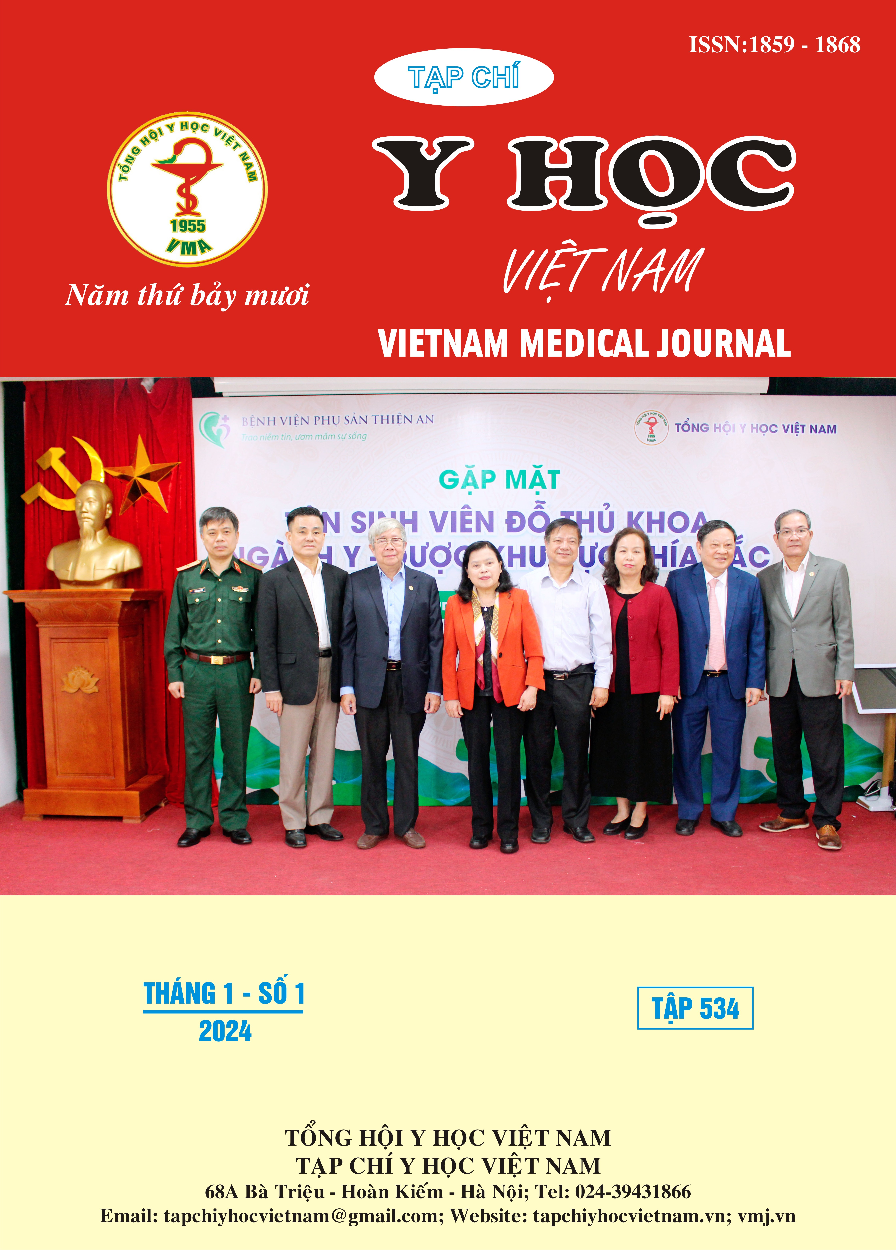EVALUATION OF EARLY RESULTS AFTER DUAL-PLANE BREAST AUGMENTATION AT HOSPITAL OF POST AND TELECOMMUNICATIONS
Main Article Content
Abstract
Background: Dual Plane breast augmentation method is a two-plane breast augmentation method, placing breast implants under the muscle and under the gland. This method is considered to ensure pocket coverage and optimize pocket placement benefits compared to other breast implant locations. Purpose: Evaluate the early results of Dual Plane breast augmentation at Hospital of Post and Telecommunications. Methods: Monitoring 70 patients undergoing breast augmentation surgery using Dual Plane technique at Hospital of Post and Telecommunications from November 2019 to June 2021. Results: The shortest surgery time was 55 minutes, the longest surgery time was 105 minutes, the average of 77.01 ± 14.56 minutes. The average breast implant size on the right (297.36 ± 19.05 cc) was larger than that on the left (295.79 ± 19.57 cc). The amount of drainage fluid ranged from 20 - 80 ml, with the average of 49.29±17.66 ml. Most patients (72.9%) only had little pain after surgery. There were only 2 cases of bleeding after surgery. Conclusion: Dual Plane breast augmentation method gave positive early results with little fluid, little pain and rare early complications after surgery.
Article Details
References
2. Karabeg R, Jakirlic M, Karabeg A, Crnogorac D, Aslani I. The New Method of Pocket Forming for Breast Implant Placement in Augmentation Mammaplasty: Dual Plane Subfascial. Med Arch. 2019; 73(3): 178. doi:10.5455/medarh. 2019.73. 178-182
3. Haefeli M, Elfering A. Pain assessment. Eur Spine J. 2006;15(S1):S17-S24. doi:10.1007/ s00586-005-1044-x
4. Lancien U, Leduc A, Tilliet Le Dentu H, Perrot P, Duteille F. Evaluation of satisfaction and well being with Breast-Q© of aesthetic breast augmentations by implants using the “Dual Plane” technique: A serie of 191 cases. Ann Chir Plast Esthet. 2021;66(4): 314-319. doi: 10.1016/ j.anplas.2020.07.008
5. Seo JH. Endoscopic transaxillary dual-plane breast augmentation: a four-year retrospective clinical study. J Cosmet Med. 2018;2(2):96-99. doi:10.25056/JCM.2018.2.2.96
6. Coriddi M, Angelos T, Nadeau M, Bennett M, Taylor A. Analysis of satisfaction and well-being in the short follow-up from breast augmentation using the BREAST-Q, a validated survey instrument. Aesthet Surg J. 2013;33(2):245-251. doi:10.1177/1090820X12472980
7. Gryskiewicz J. Dual-plane breast augmentation for minimal ptosis pseudoptosis (the “in-between” patient). Aesthet Surg J. 2013;33(1):43-65. doi: 10.1177/1090820X12469534
8. Gherardini G, Zaccheddu R, Milner SM, El-Shazlyl M, Liapakis I. Breast augmentation with silicone implants: the role of surgical drainage—report on 502 consecutive patients. Eur J Plast Surg. 2006;29(1):9-12. doi:10.1007/s00238-006-0064-z


